Making Land Rover Disco Sport and Mercedes GLC follow after Volvo XC60
Discovery Sport and Volvo XC60 we brought together for old times’ sake. Since then, Land Rover has only managed to update itself, and the XC60 has changed generations and grown noticeably. Sport seems to have fallen behind a class where Land Rover has nothing else. Although the price of the upgraded Disco is still at the level… The task of the expensive Mercedes GLC after restyling is not to let the grown-up Volvo relax if the duel with little Landy is too easy.
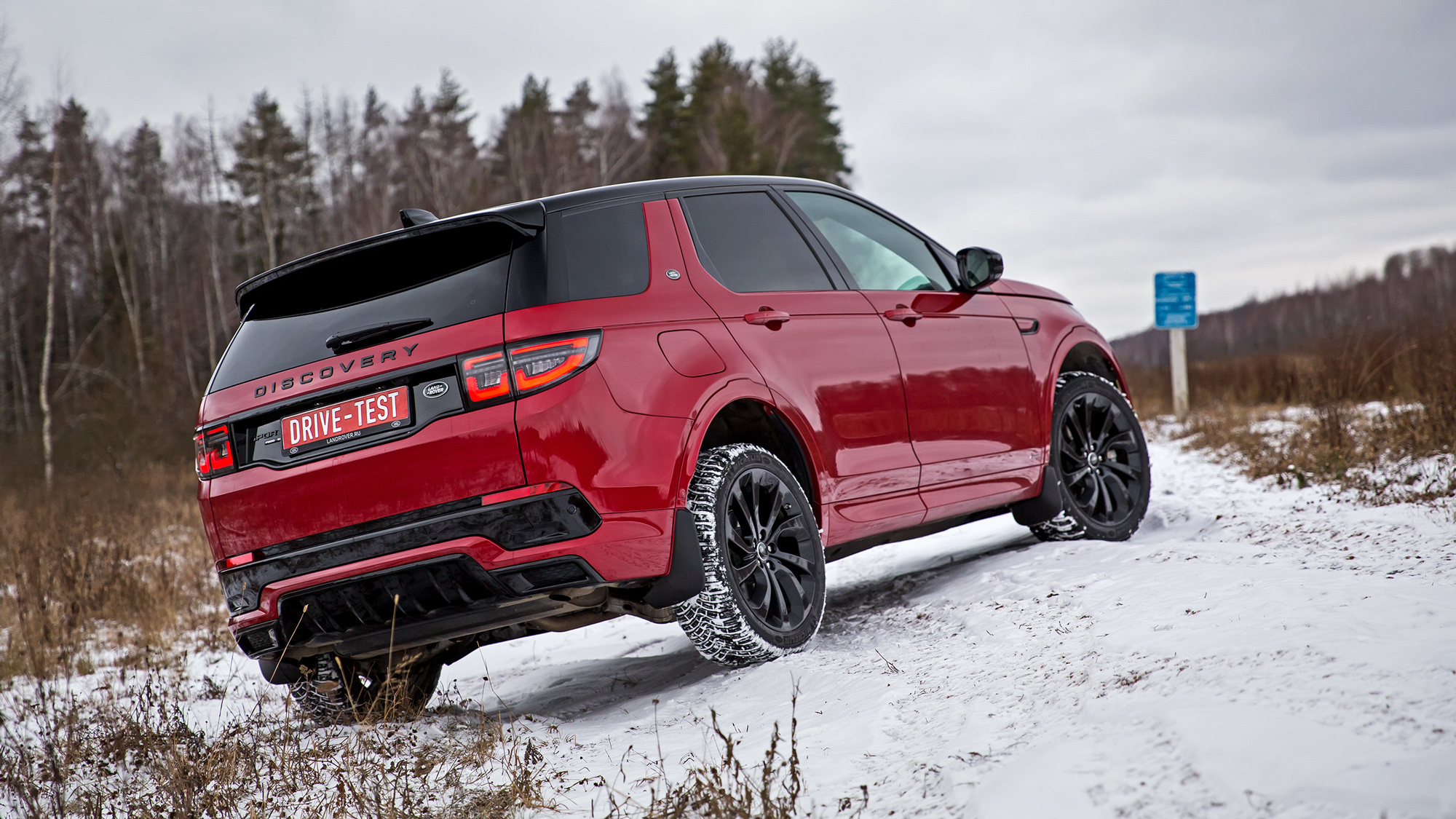
Let Discovery Sport be the most compact here, but only here you can approach it without having fabulous sums. And even within the monetary limits set by this test, Land Rover remains the most advantageous offer in terms of power and equipment ratio. If you don’t chase the R-Dynamic body kit, then instead of our 200-horsepower crossover, you can take the Sport P250 for this money. It will be better equipped than the test Volvo XC60 T5, which develops 250 hp. Mercedes manages with a living wage: 200 “horses”, leatherette, partially mechanical seat adjustments.
The Disco driver is like the captain of a small boat: I sit high and have a wide angle of view. However, the wide nose makes it difficult to understand the front dimension. The Sport can be retrofitted with a 360 degree vision system with a “clear hood” function, but the low resolution of the horizontal screen makes this option a useless toy. By the way, we are pretty tired of criticizing the Land Rover multimedia system from test to test for a strobe picture and freezes, but things are still there. Second delays are still annoying.
The modest dimensions of the Land Rover do not infringe on the freedom of the rear passengers. They sit in a waddle, and those who are not very tall can even cross their legs. However, getting into the passenger compartment is the most difficult: the threshold is high, the opening is narrowed by the wheel arch. The length of the Disco after restyling was reduced by a few millimeters, mainly due to the tightened rear bumper. This helps to reach the farthest corners of the most capacious trunk without getting dirty, although the loading height is high.
The light Volvo looks stunning and seems noticeably larger than both competitors. But this is an optical illusion: the XC60 is only a few inches longer than the frail-looking Mercedes, and even slightly inferior in wheelbase size. But there is no reason to complain about the tightness at the back. The ceiling, to put it mildly, does not put pressure on your head, it is possible to straighten your legs by slipping them under the front seat. In breadth, Volvo is a record holder at all — two medium sumo wrestlers will probably fit here.
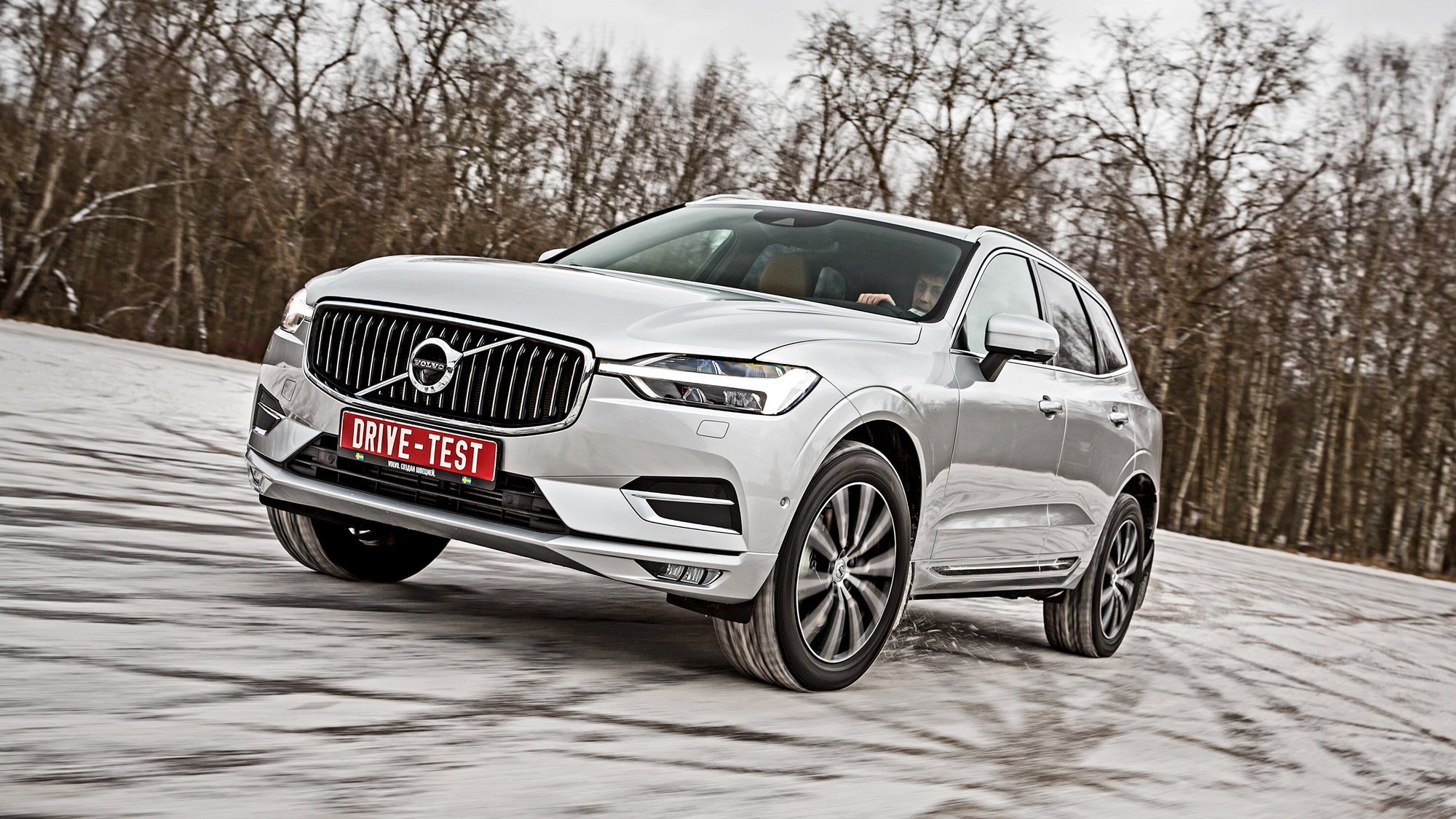
The chic interior is a pleasure to touch. The Sensus complex with a vertical display responds to commands much faster than the Touch Pro in the Discovery. The pages slide past your fingers like they’re glued on. It’s a pity that there are not enough ordinary buttons. If you want to activate the heating of the seats or the steering wheel, go to the menu. The control of the start/stop system is also hidden there, which directly begs to be turned off. I don’t mind saving fuel as much as I can, but the Volvo, with Greenpeace mania, shuts off and restarts the engine even when the selector is slowly shifted from D to R.
The appearance of the Mercedes against the background of rivals is boring, and only inside it pleases me. The quality of the materials and the attention to detail are both enjoyable. The media display sticking out of the panel enchants with an intuitive interface and impeccable graphics. When setting up a car for myself or extracting useful information from a computer, I get stuck in a colorful menu.
At the same time, the fashion for total touch control has not yet reached the GLC. Climate control and basic driving functions are controlled by physical buttons with a distinct effort. They are small and monotonous, but provide good feedback. Anything is better than pointing your finger at an icon and going out for a smoke break waiting for an answer.
Mercedes is the most spacious in our company. In the knees of the rear passengers, there is the same amount of space as in the Disco, and above the head — as in the Volvo, that is, with a size of a fist. But there is no sofa heating, no sockets for recharging gadgets, not even pockets in the backs of the front seats. The basic version of the GLC 200 is quite simple. But unencumbered by the equipment, Mercedes unexpectedly briskly starts from a standstill and responds to the movement of the accelerator with powerful linear acceleration. The automatic gearbox skillfully smooths out upshifts, but downshifts are always accompanied by small jolts.
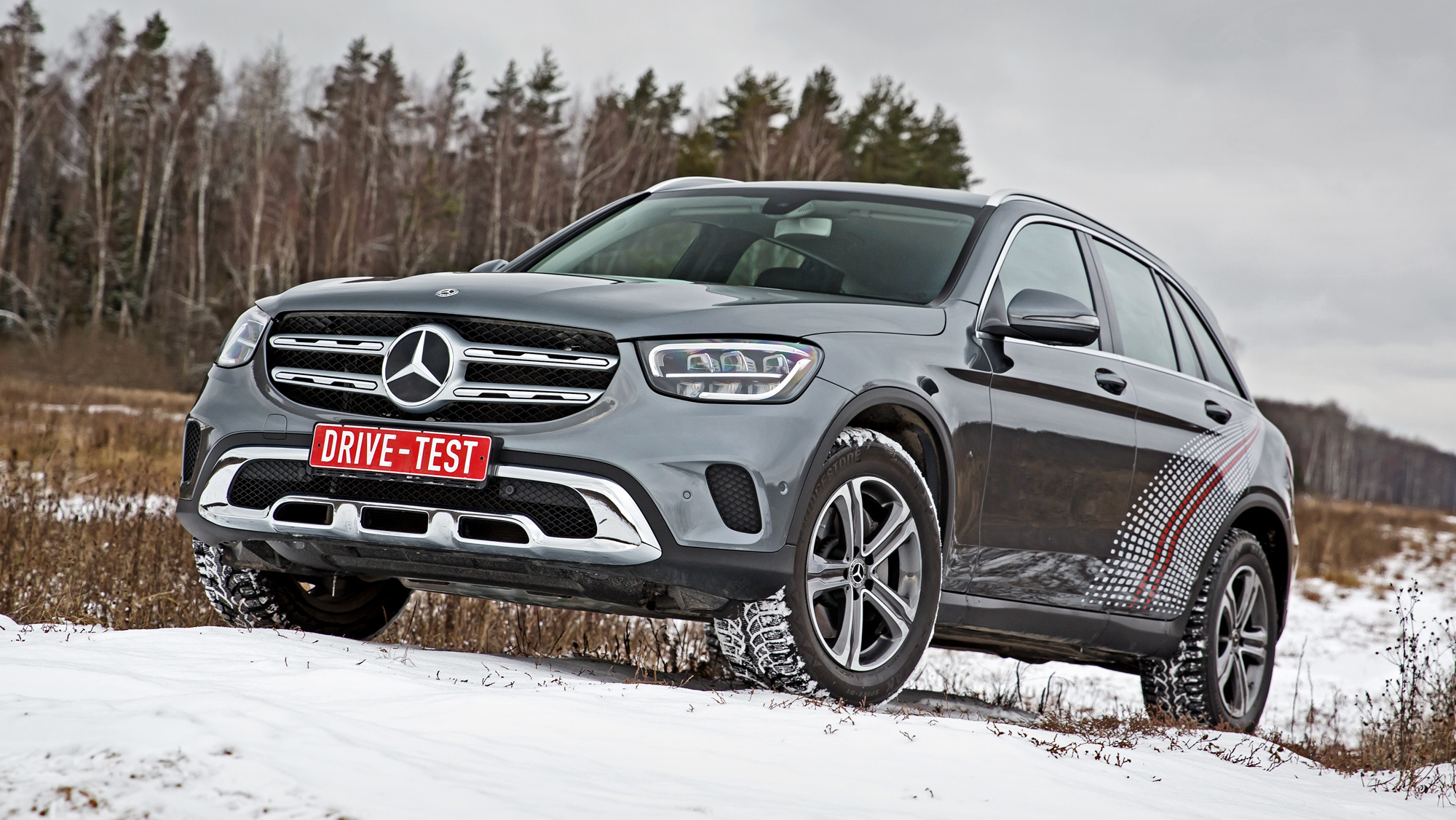
Sport mode subjectively makes Mercedes more powerful. The accuracy of responses to fuel supply increases, the box acts more quickly. And it’s not expensive to drive in Sport. The rejection of the highest ninth stage and operation at higher speeds do not greatly affect the average fuel consumption. During the test, the on-board computer counted no more than 2.4 gallons per 60 miles. Land Rover has up to 3.5 gallons per 60 miles. Volvo is the most powerful of all, but consumes 2.8 gallons.
With the same claimed curb weight as the Mercedes, the Discovery Sport takes an extra second to hit 60 mph. Although the peak thrust range of the “British” is wider and slightly higher power. Minor movements of the accelerator do not provide reliable control over acceleration. The connection on the pedal can be called acceptable only when working at large angles. Extreme acceleration is intense, but when reset, the crossover continues to accelerate for another moment. Automatic box works rougher and less predictable than the one of the GLC.
The Volvo is heavier by almost 286 lbs, but even with this handicap it remains the most dynamic of the trio. It gains momentum confidently, smoothly, without dips and bursts. But no matter what pace the driver chooses, the automatic box is always emphatically smooth. Even the Dynamic sport mode is unable to cheer it up. And without shift optimization, sharpened fuel responses break the harmony. The balanced character of the Volvo is generally disgusted by any harshness.
Even in the handling settings, there is a conscious emphasis on solidity. The rolls are minimal, but the XC60 reacts to steering deflection without aggression, after a short pause. It gives the impression of a large, massive car. That’s why the GLC pulls into corners with ease. And it doesn’t matter if it’s a flat arc of a highway interchange or a steep, 90-degree “angle” of a suburban highway. Rolls are comparable to the C-class platform sedan. More informative than Volvo, the steering wheel allows you to set and control the trajectory in the most accurate way.
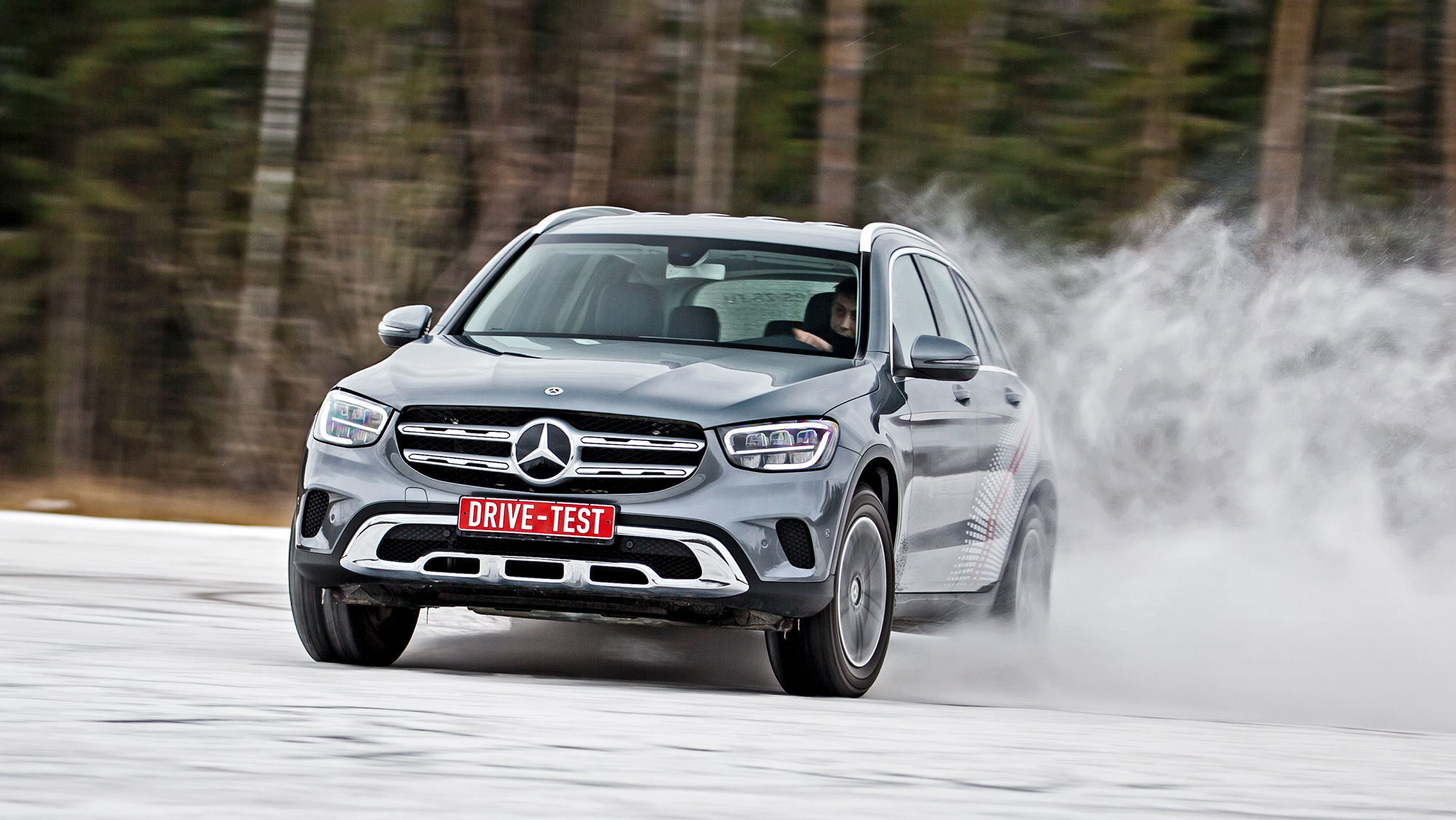
Discovery Sport changes course without enthusiasm. On a gentle arc, it floats slightly, indicating a desire for an outer curb, and in sharp turns it suffers from noticeable rolls. At the same time, the steering wheel is always loaded with a rough background force, although the feedback is generally not bad. As a result, Land Rover seems to be the most massive. In addition, the suspension, which is energy-intensive as a whole, ingenuously works out any medium-caliber defect, which gives the impression of a large SUV with dependent suspensions. Is it intended? But why is the older Discovery sleeker and lighter on the go?
The chassis of the GLC is also harsh. It stops the vertical buildup of the body on wavy asphalt in the bud. However, the shock absorbers seem to be over-clamped and other defects are processed in too much detail. On serial defects on the road, the racks are also lightly tapped. The Volvo air suspension voices only hollow bumps. As if from a lack of speed, it rises like a stake when a deep hole or a badly broken area is turned up. But the rest of the bumps XC60 irons out.
The illusion of comfort is strengthened by double-glazed windows, which almost completely cut off aerodynamic noise. The rumble of trucks outside the window turns into a whisper. Volvo in our company is the quietest. Mercedes is more accessible for exterior and road sounds, and most of them are in the Land Rover’s cabin. In addition, the Discovery Sport vibrates when you brake it at a traffic light…
If there is no benefit from the Volvo sports mode with the steering wheel hardening to the detriment of informativeness and the stiffening suspension, then the off-road one is easy to find application. Firstly, the XC60 does not have a separate clearance adjustment, and Off-road increases it to the limit of 9,8 inches. Secondly, on slippery surfaces, more linear reactions to commands from the gas pedal are useful. Thirdly, when you select this program, the descent assistant is automatically activated. Thus, as soon as the driver indicates the intention to leave the asphalt, Volvo switches to an unquestionable strict algorithm, minimizing the likelihood of errors.

The Terrain Response 2 system in Discovery is organized differently. It seems it has its own mode for any pavement, but you need to choose wisely. For example, in the snow, the electronics work quickly, but too softly — you can’t drive into a slippery slope. On angry sand, on the contrary, it almost does not interfere, which is great for loose soils or for drifting. But, again, not our case.
Mud mode is closest to the supposedly universal automatic one. Alas, the imitation of cross-wheel locks works only after slipping. While the wheels make a turn and a half idle, the crossover standing on an icy slope manages to slip off the path. In a narrow place, such fidgeting threatens the elegant body.
The chrome-plated bumper strip of the GLC looks like it’s jaw dropping in fright. Setup! The body kit of the Land Rover in the R-Dynamic version can be repainted if damaged, and the Mercedes one will require replacement in case of unsuccessful contact with the blade. Nevertheless, where overhangs allow, Mercedes proves to be a real off-road fighter. The suspension travels are no less than those of the Land Rover, on icy slopes the electronics do not allow slipping at all. At the same time, there is no special mode: traction control does everything as you want by default.
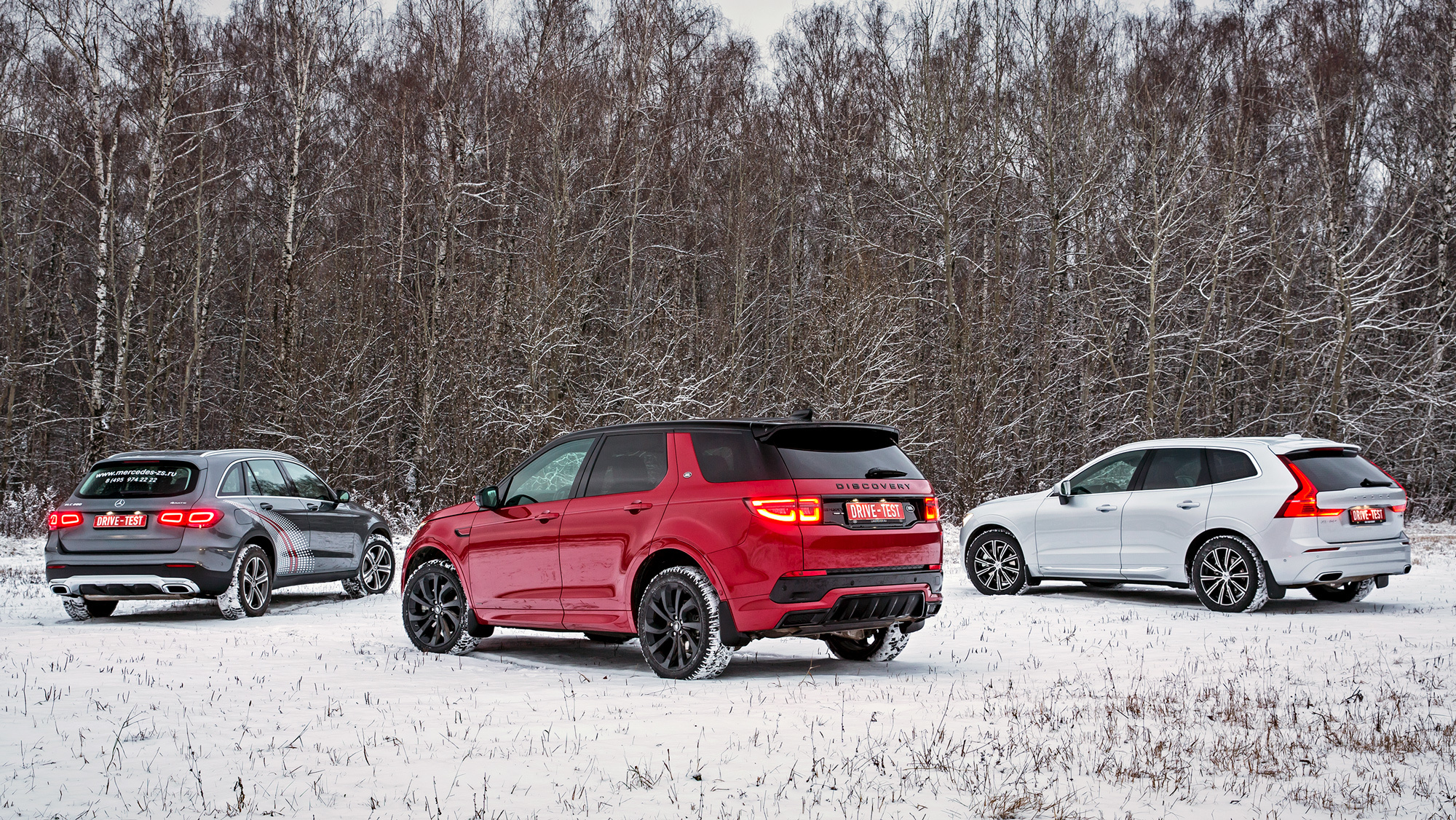
I’m still confused by the ambiguity of the GLC. On the outside, Mercedes pretends to be a mild-mannered girl, but as soon as you push the gas, it turns into a perky lad with steady sports skills. Therefore, my sympathy today is on the side of the Volvo. It’s all of a piece: pleases the eye, soothes the body and does not shout about the financial condition of the owner. On average, the XC60 sells no worse than the updated GLC, which has not yet gained full speed. In both cases, customers prefer diesel versions, which is also true for the Disco. The pre-styling one sold twice as bad as Volvo. I don’t see the potential for a breakthrough.
This is a translation. You can read the original here: https://www.drive.ru/test-drive/landrover/mercedes/volvo/5dfcdeddec05c4af7700000f.html






